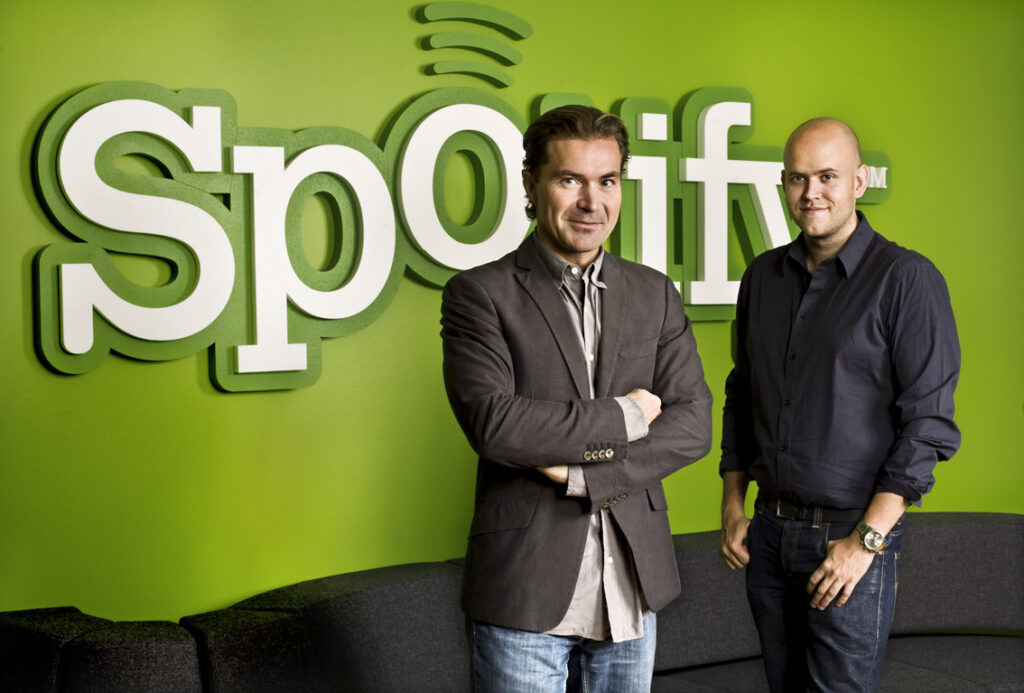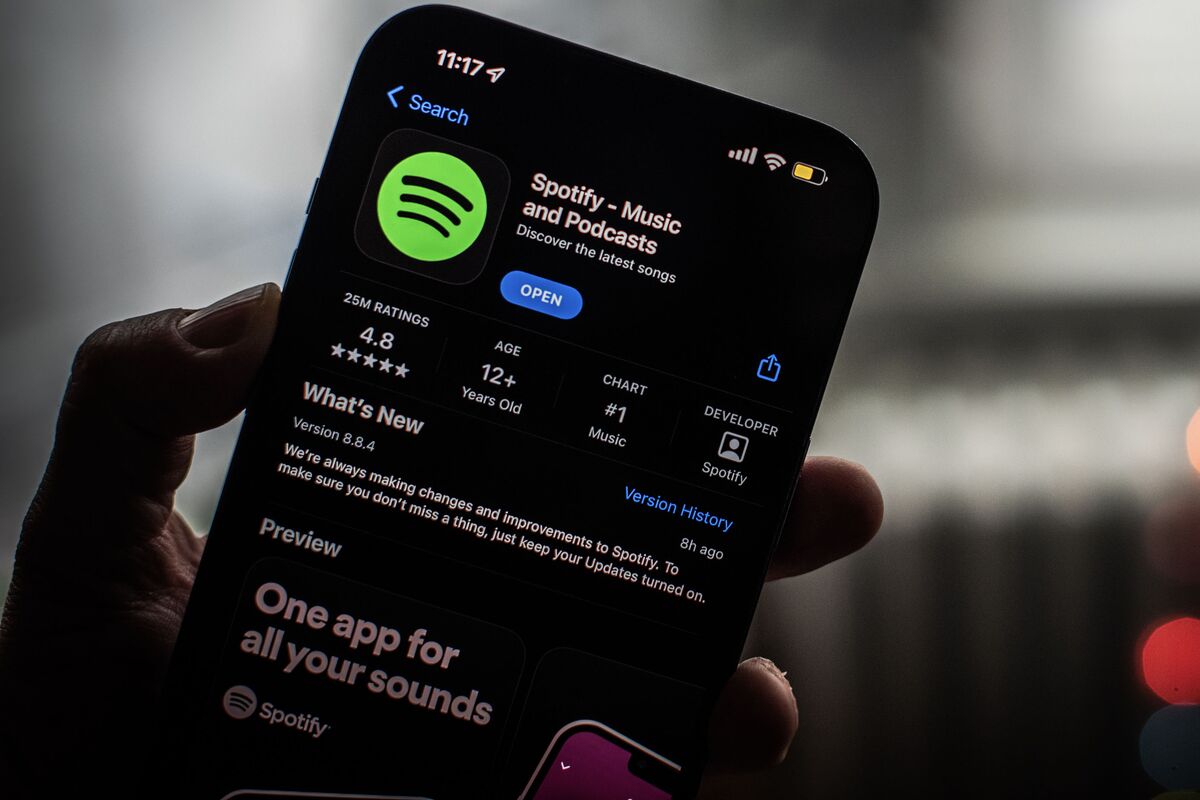In the vast landscape of the music industry, Spotify has emerged as a trailblazer, revolutionizing how we listen to and discover music. Founded in 2006 by Daniel Ek and Martin Lorentzon, this Swedish-born company has captured the hearts of millions of music enthusiasts worldwide with its innovative approach to music streaming. With a comprehensive library of songs, personalized recommendations, and an intuitive user interface, Spotify has reshaped the music consumption landscape and become a global powerhouse. In this article, we delve into the captivating success story of Spotify, exploring the factors that have propelled its meteoric rise, its disruptive impact on the industry, and the strategies behind its sustained growth.

The Birth of a Vision:
The journey of Spotify began with the vision of co-founder Daniel Ek, who sought to create a platform that would provide legal, on-demand access to music for consumers. Inspired by his own frustration with illegal music downloading, Ek envisioned a service that would offer an extensive music library, allowing users to stream their favorite songs instantly and legally. Alongside Martin Lorentzon, a successful entrepreneur and investor, Ek set out to transform this vision into reality.
Founded by Daniel Ek and Martin Lorentzon, Spotify actually started as a small start-up in Stockholm, Sweden. They developed the platform in 2006 as a response to the growing piracy problem the music industry was facing. Launching two years later, Spotify offered music fans a free service with advertising, in hopes they would upgrade to the £10 a month ad-free subscription.
Before streaming services came along you might have been guilty of using controversial file sharing sites like Napster, LimeWire and The Pirate Bay to download your music. This cost the music industry millions each year because well – you’re not paying for the songs.
Disrupting the Traditional Music Industry:
Spotify’s success can be attributed to its disruptive impact on the traditional music industry. The company challenged the prevailing model of music consumption, which predominantly relied on physical albums, CDs, and illegal downloads. By introducing a legal and user-friendly streaming service, Spotify provided a convenient alternative that catered to the evolving needs and behaviors of music enthusiasts.
The introduction of Rivals
But it wasn’t long before other platforms tried to get in on the streaming action. The company’s main rival Apple Music arrived in 2015. It secured exclusive deals with artists like Drake, Frank Ocean and Taylor Swift to stream their music first.
Apple’s iTunes store had always allowed users to pay per download of a song or album. But Apple Music introduced paying a monthly subscription for unlimited access to a library of music.
It’s not the only platform to adapt its original business model to make room for streaming. SoundCloud launched SoundCloud Go in 2016.
The company expanded from being a platform solely for new and unsigned musicians and DJs to share their work. However its success has often been questioned as it only has half of the major label content found on Spotify and has to compete against other big names.
User-Centric Experience:
A key factor in Spotify’s triumph lies in its relentless focus on delivering an exceptional user experience. The platform’s user interface is intuitive, allowing users to effortlessly navigate and explore its vast music library. Spotify’s algorithms analyze user data and preferences to provide personalized music recommendations, curated playlists, and discover weekly suggestions, enhancing the overall user experience and fostering engagement.
Extensive Music Library and Artist-Friendly Approach:
One of Spotify’s greatest strengths lies in its extensive music library. With millions of songs available at users’ fingertips, Spotify offers an unparalleled variety of genres, artists, and tracks. The platform’s licensing agreements with major record labels, as well as independent artists, ensure a diverse and comprehensive music catalog.
Furthermore, Spotify has adopted an artist-friendly approach by empowering musicians to showcase their work and reach a global audience. Through features like Spotify for Artists, artists can access valuable insights, promote their music, and engage directly with their fans, fostering a mutually beneficial relationship.
Freemium Model and Subscription Tiers:
Spotify’s freemium model, which combines free access with premium subscription options, has been instrumental in its widespread adoption. The free tier allows users to access a limited version of the service supported by advertisements, while the premium subscription offers additional benefits such as ad-free listening, offline playback, and higher audio quality. This flexible pricing structure has attracted millions of users, providing them with options to tailor their listening experience based on their preferences and budget.
The intelligent Marketing – Spotify Wrapped!
Spotify Wrapped started in 2015 as Your Year in Music, a feature for users to look back through their top music and artists alongside a playful little slideshow with specific statistics about their listening habits.
Ever since, every early December, Spotify sends each of its subscribers a report based on data gathered about their music consumption in the past year. While becoming quite popular, Your Year in Music didn’t quite go viral until it was upgraded two years later to the customizable, jazzy graphic release it is now.
Spotify’s Wrapped is an example of data done right. Music lovers are treated to different categories like their 5 most listened artists, the amount of time they spent listening, and fun facts like the first time they listened to their top song, last year’s Audio Aura, which showed listeners their top two moods based on their listening behavior, and this year’s Listening Personality.
Consumer interest in Wrapped isn’t just about the data itself, but the way that Spotify personalizes and presents this data to them. This is hyper-personalization at its finest, as each user is served up a story where they are the main character.
However, the genius does not stop just here. When subscribers receive their Wrapped report, it’s packaged and ready to be shared with their friends in a few clicks. And just like that, Spotify creates a trend.
Why the Wrapped feature is such a powerful strategy?
Wrapped feature allows Spotify to get new users and experience organic growth. According to market analytics firm MoEngage, Wrapped gives Spotify a big boost in new installs. Its mobile app downloads increased by 21% in the first week of December 2020.
As stated by Techcrunch, while in 2017 only 30 million Spotify users accessed Wrapped, by last year, that figure had grown to more than 120 million with a corresponding 60 million shares across social platforms.
However, not many companies can be proud of having created a time of the year when everyone is buzz-talking about them. Spotify has managed to accomplish the most rarest of things — create a genuine cultural moment every year, a day on which everyone on the internet seems to be talking about the same thing.
Now you might be wondering, why so?
User-generated content is a big reason behind Spotify Wrapped’s success — all social media noise about it makes any consumer want to switch their go-to audio streaming platform to Spotify and get their own Wrapped story. As users jump ship from competitors like Apple Music or Deezer to Spotify, Spotify experiences a growth in app downloads.
Source: Uxdesign.cc
Continuous Innovation and Adaptation:
Spotify’s success story is intricately woven with its commitment to continuous innovation and adaptation. The company has consistently introduced new features and functionalities to enhance the user experience. Examples include personalized playlists like Discover Weekly and Release Radar, collaborative playlists, and integration with smart devices and car systems. Additionally, Spotify has embraced emerging technologies such as voice-controlled assistants and podcasts, expanding its offerings beyond music streaming to cater to evolving consumer demands.
Strategic Partnerships and Expansion:
Spotify has strategically partnered with various industry stakeholders to drive growth and expand its reach. Collaborations with telecommunications companies, device manufacturers, and social media platforms have enabled Spotify to tap into new markets and attract a broader user base. Moreover, the company’s expansion into international markets has played a pivotal role in its global success, with localized content and regional licensing agreements catering to diverse cultural preferences.
Data-Driven Insights and Personalization:
Data lies at the heart of Spotify’s success. The platform’s sophisticated algorithms analyze user data, listening habits, and preferences to offer personalized recommendations and curated playlists. This data-driven approach enables Spotify to understand user behavior, refine its offerings, and deliver tailored experiences that keep users engaged and coming back for more.
The success story of Spotify is an inspiring tale of innovation, disruption, and dedication to the user experience. By challenging traditional music consumption models, Spotify has transformed the industry and ushered in a new era of music streaming. Its user-centric approach, extensive music library, artist-friendly initiatives, and continuous innovation have garnered a massive and devoted user base. As Spotify continues to evolve and adapt to the ever-changing landscape of the music industry, its success story serves as a testament to the power of technology, vision, and a deep understanding of consumer needs.
Future of Spotify
It gave us its digital offering first, but in recent years Spotify has been focusing more on putting on live events. It’s followed in the footsteps of Apple with its take on live gigs.
And with hip hop now the most popular genre in the world, in February it announced it would be hiring a team to work specifically on live events for urban and Latin music. Even so, tech companies like Apple, Amazon and Google are continuing to develop their streaming services.
They’ve come out with speakers, home assistants and tablets which allow people to use their streaming apps directly with the brands’ own products.
This is something Spotify has yet to crack.
Also Read: History, Business Model and Revenue Streams of Spotify
To read more content like this, subscribe to our newsletter
Go to the full page to view and submit the form.


